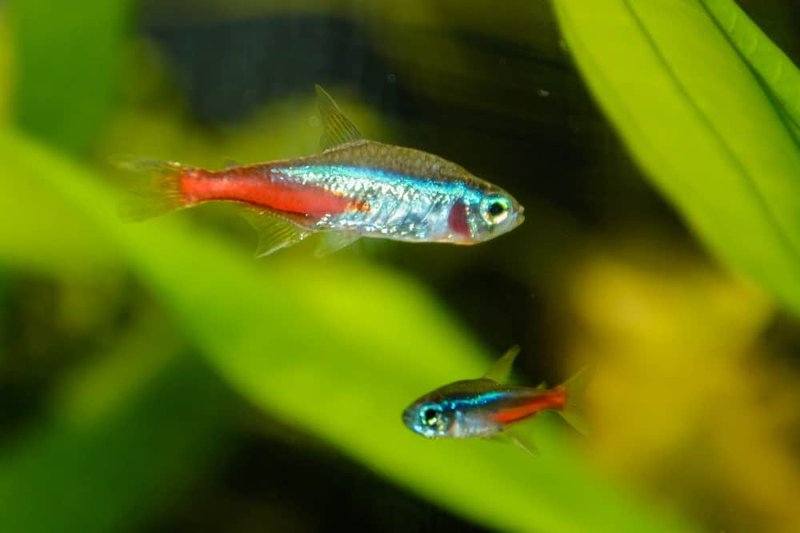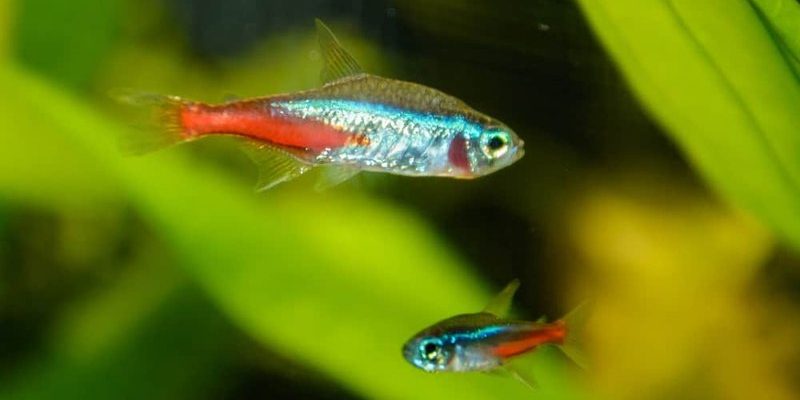
Imagine you’ve got a pet that thrives in water instead of on land. Just like a dog or cat, tetras need love and attention, but they also have unique needs based on their species. While some fish can live for a few years, others might surprise you with their longevity. Let’s dive deeper into the world of tetras and figure out what influences their lifespan in captivity.
The Lifespan of Tetras: What to Expect
Tetras generally live for 5 to 10 years in captivity, depending on various factors. When cared for properly, these little swimmers can thrive and become beloved companions for many years. Think about it like this: if you treat them well and create a healthy environment, they reward you with their vibrant presence in your home.
The most commonly kept species, like the Neon Tetra and the Cardinal Tetra, usually fall within this lifespan range. Neon tetras often live around 5 to 8 years, while Cardinal tetras can stretch it a bit longer, hitting closer to 10 years. It’s like having a streak of color in your life for nearly a decade if all goes well!
Factors That Influence Tetra Lifespan
You might be wondering, *what helps these fish live longer?* Several factors come into play when it comes to a tetra’s lifespan, and being mindful of them can make a big difference in their well-being.
Water Quality: Clean water is essential. Tetras are sensitive to changes in their environment. Regular water changes, keeping the right pH levels, and ensuring low ammonia levels can help keep your tetras healthy. Consider investing in a good water testing kit so you can monitor their space closely.
Diet: Just like us, tetras thrive on a balanced diet. Providing high-quality flakes, pellets, and even occasional treats like frozen or live foods can help them stay strong and vibrant. Think of it as giving them a balanced meal to ensure they have all the nutrients they need.
Tank Conditions: The size of the tank and the environment matters too. Tetras prefer to be in schools, so keeping them in groups of at least 6 is crucial. A well-planted tank with places to hide and swim can reduce stress, contributing to a longer lifespan.
Common Tetra Species and Their Lifespans
Knowing the specific species of tetras you have can also help estimate their lifespan. Here’s a quick overview of popular tetras and how long they typically live:
| Species | Lifespan |
|---|---|
| Neon Tetra | 5-8 years |
| Cardinal Tetra | 5-10 years |
| Rummy Nose Tetra | 5-7 years |
| Black Neon Tetra | 5-8 years |
| GloFish Tetra | 5-8 years |
This chart can be your quick guide as you plan your tank and care routine. Remember, if you want your tetras to make it to the higher end of these ranges, you’ll need to provide excellent care consistently.
Best Practices for Tetra Care
To ensure your tetras live long and healthy lives, keep these best practices in mind:
- Regular Maintenance: Perform water changes every week and clean the tank to maintain optimal conditions.
- Monitor Temperature: Most tetras thrive in temperatures between 72°F and 78°F. Check regularly to avoid drastic temperature changes.
- Avoid Overcrowding: Even though tetras like to be in groups, too many fish in one tank can lead to stress and health issues.
- Quarantine New Fish: If you’re adding new tetras, quarantine them for a couple of weeks to avoid introducing diseases to your established fish.
These steps can make a world of difference in helping your tetras thrive for years. Just imagine—your little buddies might be with you for almost a decade if you keep things in check!
Signs of a Healthy Tetra
To know if your tetras are living their best life, keep an eye out for signs of health. Healthy tetras tend to show certain behaviors and characteristics.
Active Swimming: A healthy tetra is a lively one! They should swim actively and social with their tank mates. If you notice them hiding or staying at the bottom of the tank, it could be a sign of stress or illness.
Bright Colors: Healthy tetras flaunt bright, vibrant colors. A loss of color can indicate stress, poor water quality, or illness. If you see their colors fading, it’s time to investigate further.
Appetite: A good appetite is usually a great indicator of health. Tetras that eagerly eat their food are likely happy and thriving. If they suddenly stop eating, it could be a cause for concern.
Understanding Common Health Issues in Tetras
Even with the best care, tetras can face health issues that may affect their lifespan. Here are a few common problems to watch out for:
Ich (White Spot Disease): This is a common parasitic infection that can affect tetras, especially if they’re stressed. You might notice white spots on their bodies. It’s treatable with salt treatments or medications available at pet stores.
Fin Rot: Poor water quality can lead to fin rot, where the edges of the fins appear frayed. Maintaining clean water can often prevent this issue, but if it happens, medications can help.
Swim Bladder Disorder: Tetras can sometimes have trouble swimming properly, either floating to the top or sinking to the bottom. This can be caused by overfeeding. Adjusting their diet can help.
Keeping a close eye on your fish and knowing what to look for can help you catch any issues early.
Final Thoughts on Tetra Lifespan
In conclusion, understanding how long tetras live can help you care for them better. With proper attention to their environment, diet, and health, you can ensure these colorful fish remain a joyful part of your life for many years. Remember, it’s all about creating a happy, healthy space for them to thrive. So, if you’re thinking about getting tetras, make sure you’re ready for a little commitment—these fish can be around longer than you might expect!

